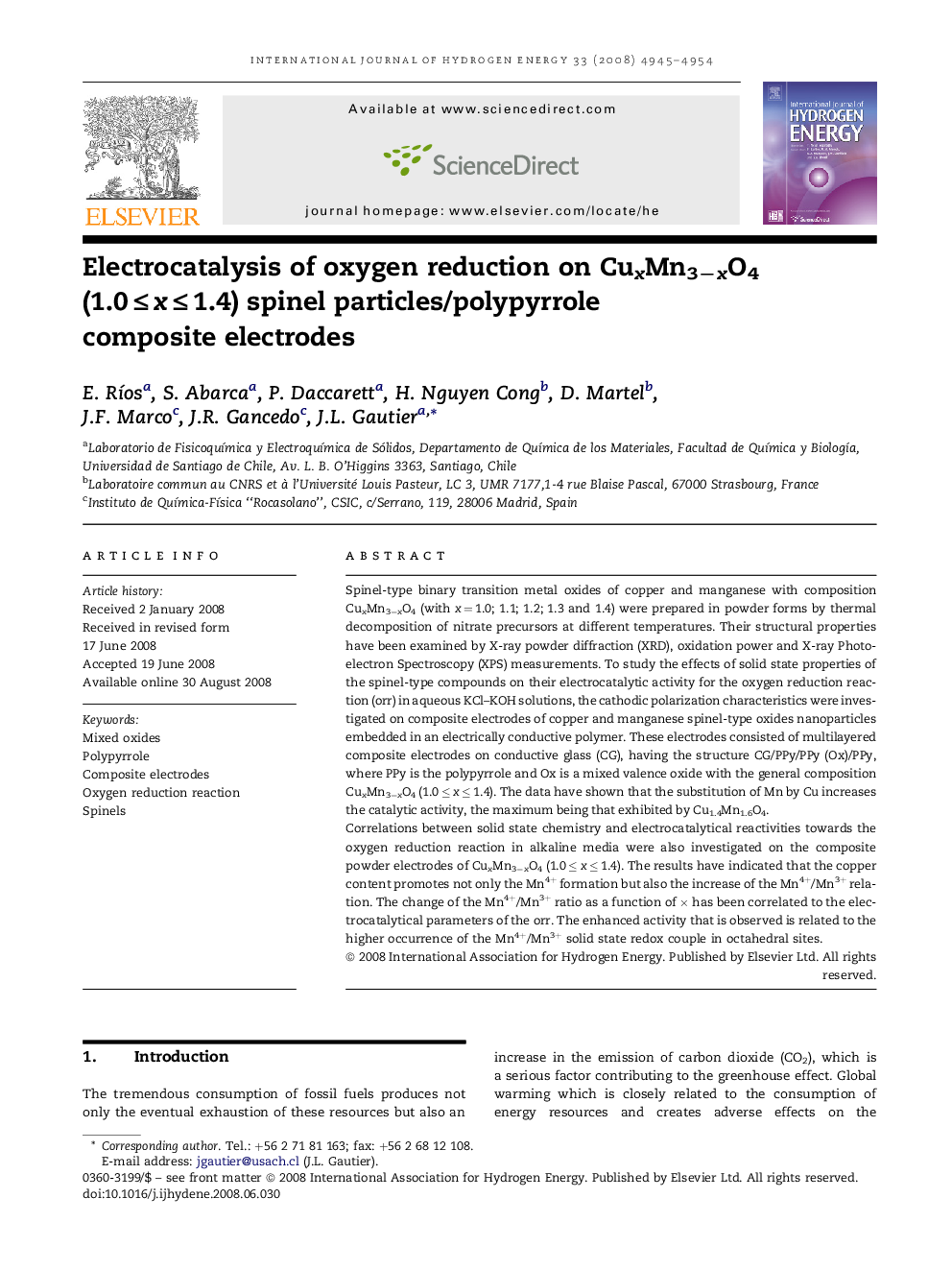| Article ID | Journal | Published Year | Pages | File Type |
|---|---|---|---|---|
| 1281404 | International Journal of Hydrogen Energy | 2008 | 10 Pages |
Spinel-type binary transition metal oxides of copper and manganese with composition CuxMn3−xO4 (with x = 1.0; 1.1; 1.2; 1.3 and 1.4) were prepared in powder forms by thermal decomposition of nitrate precursors at different temperatures. Their structural properties have been examined by X-ray powder diffraction (XRD), oxidation power and X-ray Photoelectron Spectroscopy (XPS) measurements. To study the effects of solid state properties of the spinel-type compounds on their electrocatalytic activity for the oxygen reduction reaction (orr) in aqueous KCl–KOH solutions, the cathodic polarization characteristics were investigated on composite electrodes of copper and manganese spinel-type oxides nanoparticles embedded in an electrically conductive polymer. These electrodes consisted of multilayered composite electrodes on conductive glass (CG), having the structure CG/PPy/PPy (Ox)/PPy, where PPy is the polypyrrole and Ox is a mixed valence oxide with the general composition CuxMn3−xO4 (1.0 ≤ x ≤ 1.4). The data have shown that the substitution of Mn by Cu increases the catalytic activity, the maximum being that exhibited by Cu1.4Mn1.6O4.Correlations between solid state chemistry and electrocatalytical reactivities towards the oxygen reduction reaction in alkaline media were also investigated on the composite powder electrodes of CuxMn3−xO4 (1.0 ≤ x ≤ 1.4). The results have indicated that the copper content promotes not only the Mn4+ formation but also the increase of the Mn4+/Mn3+ relation. The change of the Mn4+/Mn3+ ratio as a function of × has been correlated to the electrocatalytical parameters of the orr. The enhanced activity that is observed is related to the higher occurrence of the Mn4+/Mn3+ solid state redox couple in octahedral sites.
